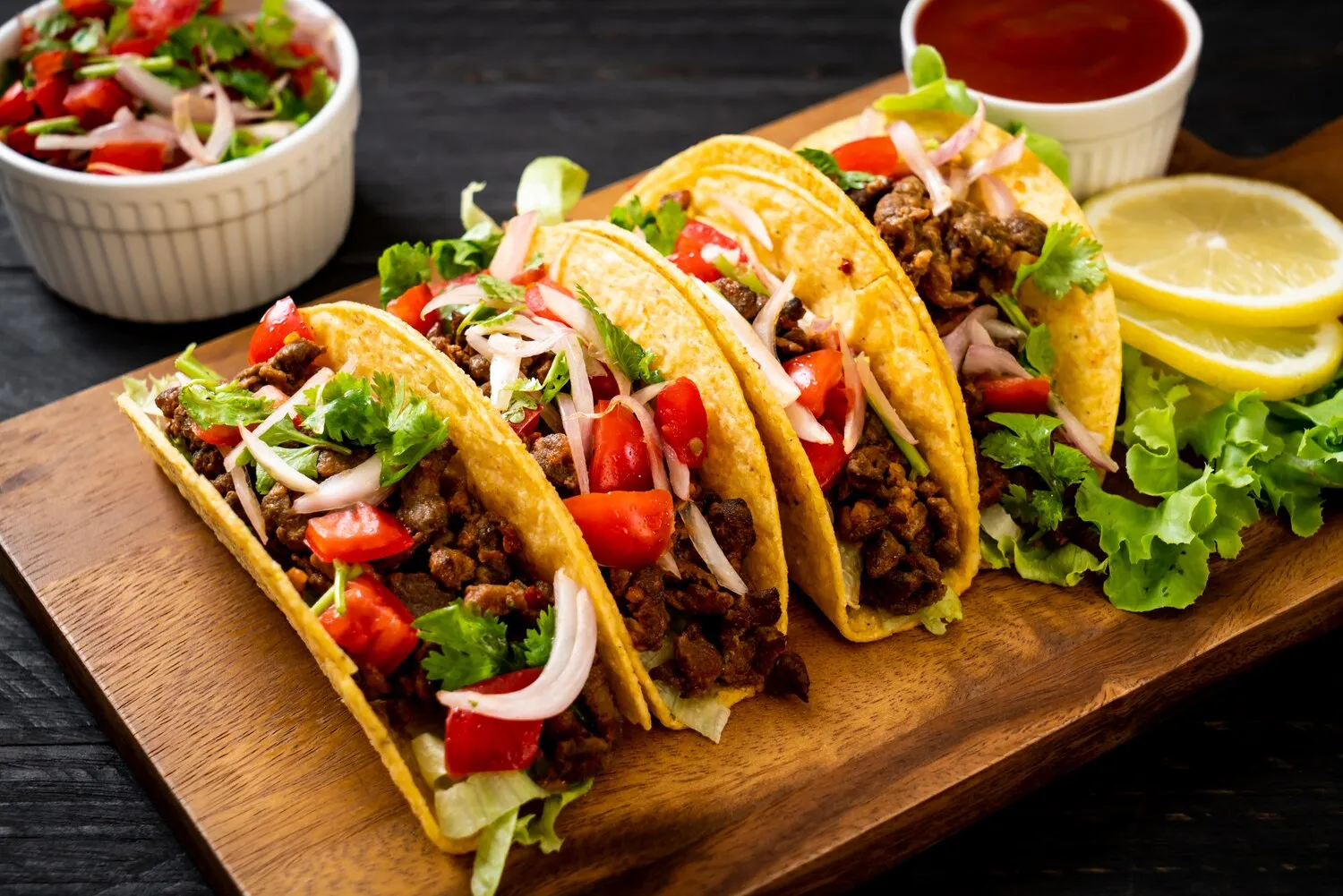
Tacos
Authentic Mexican tacos, available with various fillings such as carnitas, carne asada, or vegetarian options.
Nutrition Facts
* The % Daily Value (DV) tells you how much a nutrient in a serving of food contributes to a daily diet. 2,000 calories a day is used for general nutrition advice.
Tacos have ancient roots in Mexico, predating the arrival of the Spanish. Evidence suggests that early forms of tacos were consumed by indigenous people in the Valley of Mexico, who used them as a way to eat fish and other foods. The modern taco evolved with the introduction of new ingredients and culinary techniques from Europe and other parts of the world.
Tacos are more than just food in Mexico; they are a symbol of culture, community, and celebration, deeply woven into the fabric of daily life.
Street Food Staple
Tacos are ubiquitous on the streets of Mexico, sold from small stands and carts, often late into the night. They are a quick, affordable, and delicious meal option for people from all walks of life.
Regional Variations
Each region of Mexico has its own unique taco styles and fillings, reflecting local ingredients and culinary traditions. For example, Baja California is known for fish tacos, while Yucatan is famous for cochinita pibil tacos.
Social Gatherings
Taco parties, or 'taquizas', are a common way to celebrate special occasions in Mexico. They bring people together to share food, laughter, and good times.
Beyond sustenance
Tacos transcend mere sustenance. They embody cultural heritage, bringing families and communities together around the simple joy of shared food and traditions. Taco preparation can be a collaborative family activity, passing down recipes and techniques through generations.
Tacos offer a vibrant tapestry of flavors, from the savory and rich fillings to the fresh and zesty toppings, all wrapped in the simple comfort of a corn or flour tortilla.
The flavor profile of a taco heavily depends on the filling. Common fillings include seasoned meats like carne asada (grilled beef), al pastor (marinated pork), carnitas (braised pork), and barbacoa (slow-cooked meat, traditionally lamb or goat). Vegetarian options often feature beans, potatoes, mushrooms, or nopales (cactus). The toppings play a crucial role, providing contrasting textures and flavors. Common toppings include onions, cilantro, salsa (ranging from mild to extremely spicy), guacamole or avocado, lime wedges, and pickled vegetables.
Tortilla Choice
Corn tortillas are the traditional choice, especially for fillings like carne asada and al pastor. Flour tortillas are more common in northern Mexico and are often used for breakfast tacos or more modern variations. Always warm the tortillas before filling to make them more pliable and flavorful.
Salsa Selection
The salsa is a crucial component. Experiment with different types of salsa to find your preferred level of heat and flavor. Consider pairing specific salsas with different fillings – a tomatillo salsa with carnitas, or a spicy arbol salsa with carne asada.
Fresh Ingredients
Use the freshest possible ingredients for the best flavor. Opt for locally sourced meats, vegetables, and herbs whenever possible. Freshly chopped cilantro and onions are essential for an authentic taco experience.
Lime is key
Always have lime wedges available to squeeze over your tacos. The acidity of the lime brightens the flavors and adds a refreshing touch.
Embrace Simplicity
Often, the best tacos are the simplest. Don't overcomplicate the fillings or toppings. Focus on high-quality ingredients and proper preparation.
Explore additional Mexican Street Food dishes and restaurants
Explore Mexican Street FoodDiscover top dining spots and culinary experiences in Montpellier.
Explore MontpellierLearn more about the food culture, restaurant scene, and culinary heritage of France.
Explore France